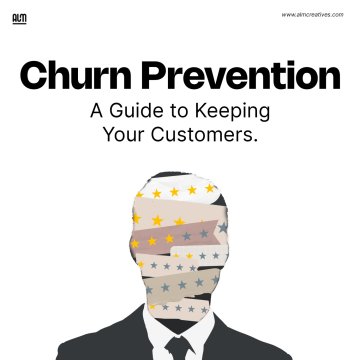Search
Creating compelling value propositions: Key Elements
Business and advices
Creating compelling value propositions is essential for businesses looking to differentiate themselves from competitors, win new clients, and retain existing ones.
A well-crafted value proposition communicates the unique benefits that your product or service offers to potential customers, helping them understand how it can solve their problems and meet their needs better than any other option in the market.
A well-crafted value proposition can be the key to winning over clients and gaining a competitive edge in the market.
Understanding the Value Proposition
A value proposition is a concise statement that communicates the unique value and benefits your product or service brings to customers.
It answers the fundamental question: "Why should customers choose your offering over alternatives in the market?"
A strong value proposition effectively communicates the specific problem your offering solves, the benefits it provides, and why it is superior to other options available.
What Makes a Strong Value Proposition?
A strong value proposition should be clear, concise, and tailored to your target audience.
It should highlight the key benefits of your product or service and explain how it solves the customer's problem or meets their need.
Here are some critical elements of a strong value proposition:
1. Unique Selling Point (USP):
Clearly state what sets your offering apart from others in the market. What makes it unique, and why should customers choose it over alternatives?
2. Customer Problem:
Identify the specific problem or challenge that your target audience faces, and explain how your product or service addresses it.
3. Benefits:
Highlight the key benefits of your offering, such as cost savings, increased efficiency, improved quality, or enhanced customer experience. Quantify these benefits wherever possible.
4. Target Audience:
Define your ideal customer and describe their characteristics, pain points, and goals. This helps ensure that your value proposition resonates with your intended audience.
5. Competitive Advantage:
Explain how your offering outperforms competing solutions, addressing potential objections and concerns that customers may have.
6. Proof Points:
Provide evidence to support your claims through case studies, testimonials, data, or industry certifications.
7. Emotional Connection:
Appeal to your audience's emotions by highlighting how your product or service will make them feel, whether it's confidence, peace of mind, excitement, or satisfaction.
8. Clarity:
Ensure that your value proposition is easy to understand and free from jargon or technical terms that might confuse potential customers.
Key Elements of a Compelling Value Proposition
1. Customer-Centric Approach:

Begin by understanding your target audience's needs, desires, and pain points. A compelling value proposition should address these specific challenges and clearly articulate how your offering can solve their problems or meet their needs better than anyone else.
2. Clear Differentiation:
Identify what sets your offering apart from competitors. Highlight the unique features, benefits, or advantages that make your product or service stand out in the market.
It could be a technological innovation, superior quality, cost-effectiveness, exceptional service, or a combination of factors.
Empatize the value that customers can only get from your offering.
3. Quantifiable Benefits:

Provide tangible evidence of the value your offering delivers. Use specific metrics, such as cost savings, time efficiency, increased productivity, or improved outcomes, to quantify the benefits customers can expect from choosing your product or service.
This adds credibility to your value proposition and helps customers evaluate the potential return on their investment.
4. Clear and Concise Messaging:
Keep your value proposition simple and easy to understand. Avoid jargon or technical language that may confuse your audience. Use clear and concise language to communicate the core benefits and advantages of your offering.
Focus on the most relevant aspects that resonate with your target audience.
5. Emotional Appeal:
While it is important to highlight the rational benefits, don't overlook the emotional aspects. Understand the emotional triggers that influence your target audience's decision-making process.
Craft your value proposition in a way that connects with their aspirations, desires, or pain points on an emotional level. This can create a powerful emotional bond and increase the perceived value of your offering.
Crafting Your Value Proposition
1. Research and Analysis:
Conduct thorough market research to understand your target audience, competitors, and industry trends. Identify the unique selling points of your offering and analyze how they align with customer needs and market demands.
This research will form the foundation for your value proposition.
2. Value Proposition Statement:
Develop a clear and impactful value proposition statement that encapsulates the essence of your offering. Keep it concise, ideally within a sentence or two, to ensure it is memorable and easily understood.
Test your value proposition statement with potential customers to gauge its effectiveness.
3. Supporting Messages:
Once you have the core value proposition statement, create supporting messages that reinforce the key benefits and differentiation points.
These messages should expand on the value proposition, providing additional context and persuasive arguments to support your claims.
4. Consistency across Channels:
Ensure consistency in your value proposition across all marketing channels and touchpoints.
Whether it's your website, social media, advertisements, or sales presentations, the value proposition should be consistently communicated to reinforce the core message and build brand recognition.
5. Test and Refine:
Continuously test and refine your value proposition based on customer feedback and market dynamics.
Solicit feedback from existing customers, conduct surveys, or perform A/B testing to gauge the effectiveness of your value proposition. Make necessary adjustments to improve its impact and resonance with your target audience.
Examples of Successful Value Propositions
Let's look at some successful value propositions across different industries:
1. Uber:
"Tap a button, get a ride" - Simple, yet powerful. Uber's value proposition emphasizes convenience, speed, and ease of use.
2. Dropbox:
"Collaboration made simple" - Dropbox's value proposition stresses the importance of seamless collaboration and streamlined workflows.
3. Warby Parker:
"Eyewear that doesn't break the bank" - Warby Parker's value proposition appeals to budget-conscious consumers who want stylish glasses without the high price tag.
4. Salesforce:
"Customer success platform" - Salesforce's value proposition positions the company as a partner in customer success, emphasizing the importance of long-term relationships and mutual growth.
5. Nike:
"Just do it" - Nike's iconic value proposition inspires and motivates athletes and non-athletes alike, promoting a culture of ambition and achievement.
6. Apple iPhone:
"Think differently." Apple's value proposition focuses on innovation, sleek design, and user experience, positioning its products as premium choices in the smartphone market.
Conclusion

Creating a compelling value proposition is an essential component of successful marketing and sales strategies.
By understanding your customers' needs, differentiating your offerings, quantifying the benefits, and crafting clear and concise messaging, you can develop a value proposition that resonates with your target audience and helps you win clients.
Remember to continuously analyze and refine your value proposition to stay relevant in a rapidly evolving market.




